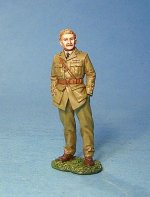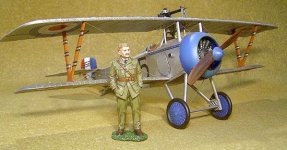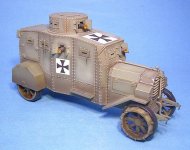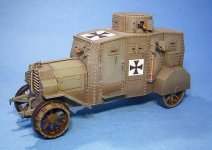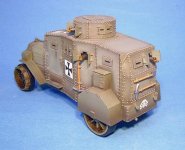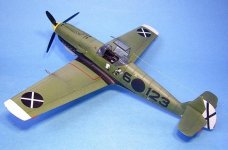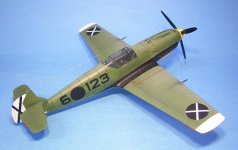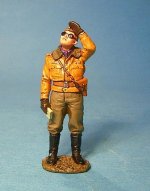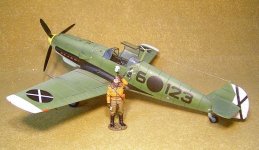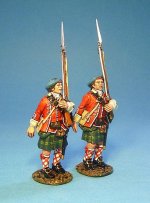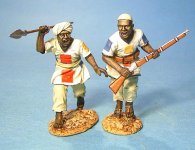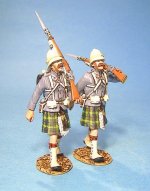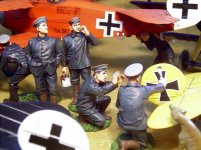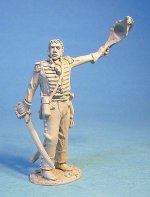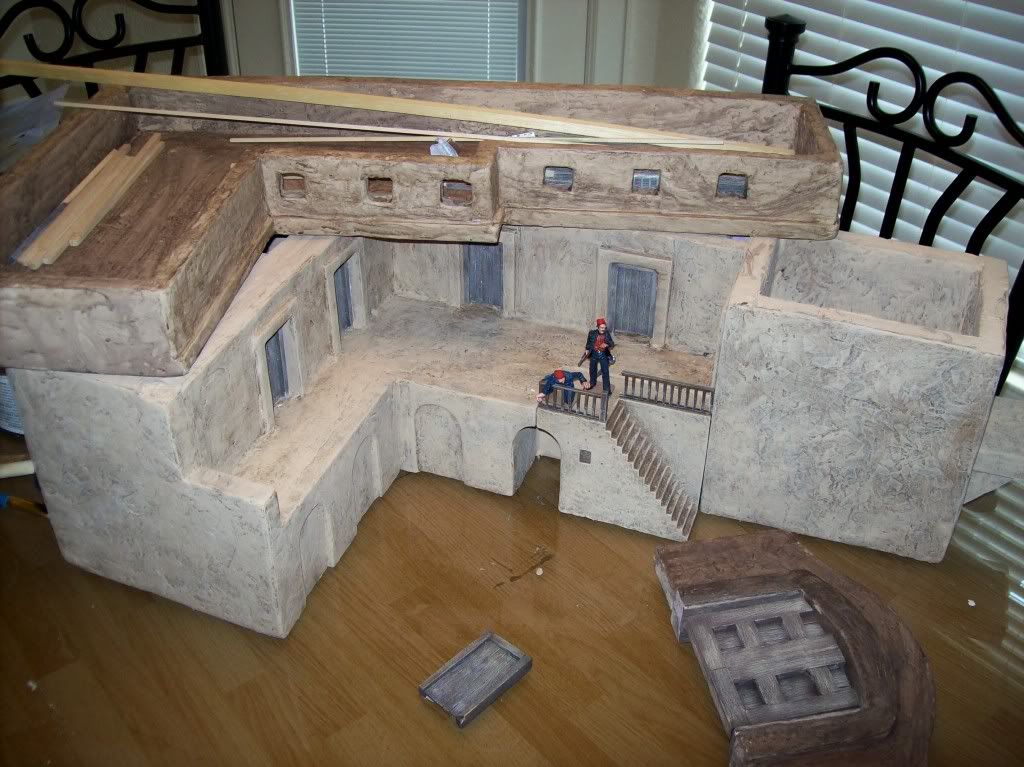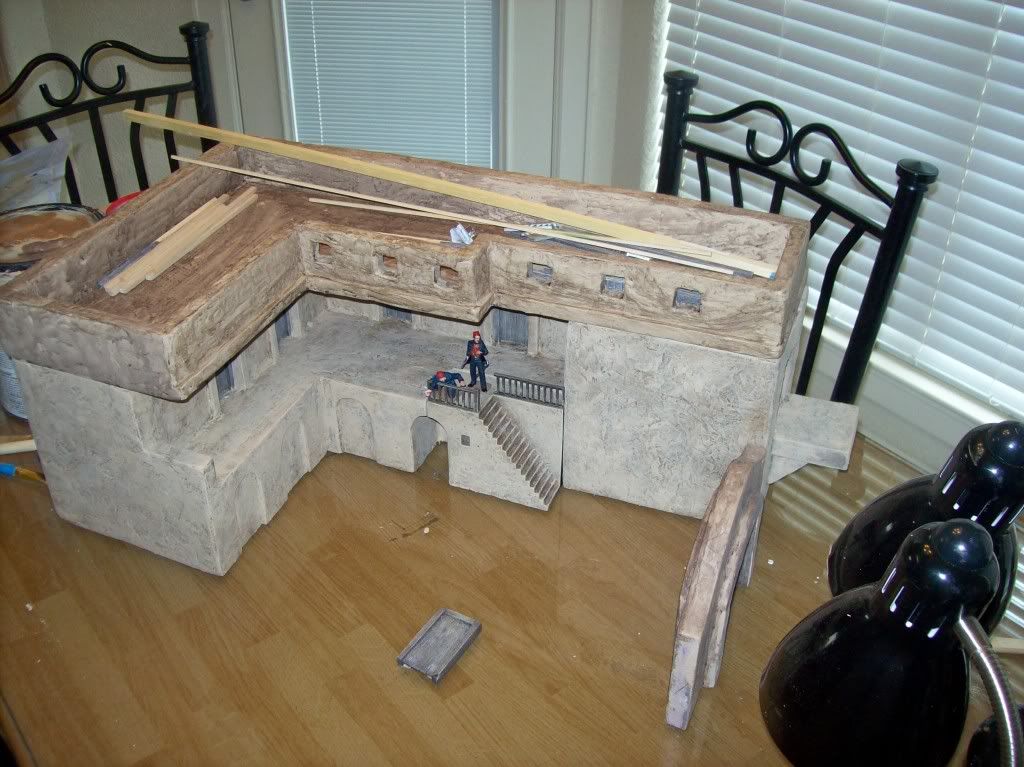Good morning from a very warm and pleasant San Francisco Bay Area. Welcome to the new releases for August, and do we have some surprises for you and I hope for everyone.
We should have these up on the web site later this morning.
www.sierratoysoldier.com
I hope you are as impressed as I am.
Best Regards
Mike
Sierra Toy Soldier Company
KNIGHTS OF THE SKIES
WILLIAM AVERY “BILLY” BISHOP
Air Marshal William Avery "Billy" Bishop VC, CB, DSO & Bar, MC, DFC, ED (8 February 1894 – 11 September 1956) was a Canadian First World War flying ace, officially credited with 72 victories, making him the top Canadian ace.
ACE-02P - KNIGHTS OF THE SKIES - “BILLY” BISHOP
(1pc)
Not Limited Edition
Retail us$33
On 17 March 1917, Bishop arrived at 60 Squadron at Filescamp Farm near Arras, where he flew the Nieuport 17 fighter. At that time, the average life expectancy of a new pilot in that sector was 11 days, and German aces were shooting down British aircraft 5 to 1. Bishop's first patrol on 22 March was less than successful. He had trouble controlling his run-down aircraft, was nearly shot down by anti-aircraft fire, and became separated from his group. On 24 March, after crash landing his aircraft during a practice flight in front of General John Higgins, Bishop was ordered to return to flight school at Upavon. But before he could leave, Major Alan Scott, new commander of 60 Squadron, convinced Higgins to let him stay until a replacement arrived.
The next day Bishop claimed his first victory when his was one of four Nieuports that engaged three Albatros D.III Scouts near St Leger. Bishop shot down and mortally wounded a 12 kill ace, Theiller, but his engine failed in the process.
He landed in No Man's Land 300 yards from the German front line. After running to the Allied trenches, Bishop spent the night on the ground in a rainstorm. There Bishop wrote a letter home, stating:"I am writing this from a dugout 300 yards from our front line, after the most exciting adventure of my life."
Bishop, in addition to the usual patrols with his squadron comrades, soon flew many unofficial "lone-wolf" missions deep into enemy territory. As a result, his total of enemy aircraft shot down increased rapidly. On 8 April he scored his fifth victory and became an ace. To celebrate, Bishop's mechanic painted the aircraft's nose blue, the mark of an ace.
Bishop's no-hold-barred style of flying always had him "at the front of the pack," leading his pilots into battle over hostile territory. Bishop soon realized that this would eventually see him shot down. After one patrol, a mechanic counted 210 bullet holes in his aircraft.
His new method of using the surprise attack proved successful; he claimed 12 aircraft in April alone, winning the Military Cross and a promotion to Captain for his participation at the Battle of Vimy Ridge.
The successes of Bishop and his blue-nosed aircraft were noticed on the German side, and they began referring to him as "Hell's Handmaiden". Ernst Udet called him "the greatest English scouting ace" and one Jasta had a bounty on his head.
On 30 April, Bishop survived an encounter with Jasta 11 and Manfred von Richthofen, the Red Baron. In May, Bishop won the Distinguished Service Order for shooting down two aircraft while being attacked by four others.
On 2 June 1917, Bishop flew a solo mission behind enemy lines to attack a German-held aerodrome, where he claimed that he shot down three aircraft that were taking off to attack him and destroyed several more on the ground. For this feat, he was awarded the Victoria Cross (VC), although it has been suggested that he may have embellished his success. His VC was one of two awarded in violation of the warrant requiring witnesses (the other being the Unknown Soldier), and since the German records have been lost and the archived papers relating to the VC were lost as well, there is no way of confirming whether there were any witnesses. It was however common practice at this time among the RFC and RNAS squadrons to submit kills claimed without requiring confirmation or verification from other witnesses.
EHRHARDT E-V/4 ARMOURED CAR
The E-V/4 Panzerkraftwagen Ehrhardt was one of the first examples of a type of high and flatsided armoured car design that the Germans used almost until the start of the Second World War for internal policing duties. It weighed nearly 9 tons, had a crew of eight or nine, and carried an armament of up to three machine-guns.
In 1915 the German Army decided to produce an armoured car, but without any practical experience they approached the car manufacturing companies Ehrhardt, Daimler and Büssing, and ordered a prototype armoured car from each.
During 1915, the three companies produced the ordered prototypes. In all three cases, the three prototypes were massive vehicles, the largest of which was the Büssing. The Ehrhardt and Daimler designs were very similar. Both placed the engine in the front, surrounded by armour, and had a large box-like body at the rear with a turret on the top. Both sported a clumsy appearance, and was far too heavy for the effective fulfillment of the operational tasks the German Army demanded of them.
The Daimler and Ehrhardt prototypes were both reliant on the use of double wheels on each side of the rear, and had flanges on the single wheels at the front of the vehicle, in an effort to reduce ground pressure and so enhance the cross-country mobility of the vehicle to a useful degree. All three cars had a crew of eight or nine men, carried an armament of at least three machine guns, and possessed a maximum armour thickness of 9 mm.
GGC-02 - E-V/4 Panzerkraftwagen Ehrhardt, GERMAN ARMOURED CAR,
(2pcs)
Not Limited Edition
Retail us$158
THE SPANISH CIVIL WAR, THE CONDOR LEGION
THE WEHRMACHT’S TRAINING GROUND
The Messerschmitt Bf 109, often called the ME 109, was a German World War II fighter aircraft designed by Willy Messerschmitt and Robert Lusser during the early to mid 1930s. It was one of the first true modern fighters of the era.
The ME 109 first saw operational service during the Spanish Civil War and was still in service at the dawn of the jet age at the end of World War II, during which time it was the backbone of the Luftwaffe's fighter force
The 109E first saw service with the "Condor Legion" during the last phase of the Spanish Civil War and was the main variant from the beginning of World War II until mid-1941 when the 109F replaced it in the pure fighter role.
The ME109 A, B, C and D were powered by the Junkers Jumo engine. The Messerschmitt Bf 109 E series was the first of the family to be fitted with the Daimler Benz DB601A engine, resulting in a significant improvement in performance.
The Spanish Civil War presented the opportunity to test these revolutionary fighters in action, and they proved their worth in combat with Legion Condor over the skies of Spain.
Two variants were manufactured in parallel - the lightweight Bf 109 E-1 which retained the wing-mounted 7.9mm machine guns of the earlier Bf 109 B, C and D; and the Bf 109 E-3 which was fitted with one 20mm MG FF cannon in each wing. Both variants featured two additional 7.92mm machine guns in the cowl.
The 109E saw little real action as by the time they entered the Spanish Civil war, the opposition was pretty well worn down.
COND-05 THE CONDOR LEGION
MESSERCHMITT BF-109E (6-123)
(2pcs)
NOT LIMITED
Retail us$209
The first plane to be produced for this series is the ME109-E flown by Oblt. Hans Schmoller-Haldy.
The “Mickey Mouse” was the Steffel-Emblem of 3.J/88, while the Beer Mug was Oblt. Schmoller-Haldy’s personal emblem. The CP stood for "The Order of Cardinal Puff", which apparently was a pilots beer club founded in Belgium.
Schmoller-Haldy did not score any kills in Spain.
Schmoller-Haldy went on to fight in Poland and France during the second world war, and was wounded in action in Russia on February 23rd, 1942. He survived the war.
COND-05P THE CONDOR LEGION
Oblt. Hans Schmoller-Haldy, 3.J/88 Legion Condor, March 1939
(1pc)
NOT LIMITED
Retail us$33
BATTLE Of FORT CARILLON, TICONDEROGA, 8th JULY 1758
TIC-01 - 42nd REGIMENT OF FOOT, Line Infantry Marching,
(2pc)
Not Limited Edition
Retail us$77
THE FIRST SUDAN WAR 1884-1885
I apologize the first of the Beja sets are still not ready, so instead the first of the mahdist sets will be released.
This set will be the perfect addition to the “Gordon At Khartoum” display.
SUD-05 - MAHDISTS 2 Figures Charging
(2pcs)
NOT Limited Edition
Retail us$68
GDH-09 - GORDON HIGHLANDERS 2 Figures Marching
(2pcs)
NOT Limited Edition
Retail us$68
CAPTION CONTEST#6 2011
This year’s official Caption contest!
Please check the website for entry details, and past contests.
Hope you enjoyed.
Mike
Sierra Toy Soldier Company
We should have these up on the web site later this morning.
www.sierratoysoldier.com
I hope you are as impressed as I am.
Best Regards
Mike
Sierra Toy Soldier Company
KNIGHTS OF THE SKIES
WILLIAM AVERY “BILLY” BISHOP
Air Marshal William Avery "Billy" Bishop VC, CB, DSO & Bar, MC, DFC, ED (8 February 1894 – 11 September 1956) was a Canadian First World War flying ace, officially credited with 72 victories, making him the top Canadian ace.
ACE-02P - KNIGHTS OF THE SKIES - “BILLY” BISHOP
(1pc)
Not Limited Edition
Retail us$33
On 17 March 1917, Bishop arrived at 60 Squadron at Filescamp Farm near Arras, where he flew the Nieuport 17 fighter. At that time, the average life expectancy of a new pilot in that sector was 11 days, and German aces were shooting down British aircraft 5 to 1. Bishop's first patrol on 22 March was less than successful. He had trouble controlling his run-down aircraft, was nearly shot down by anti-aircraft fire, and became separated from his group. On 24 March, after crash landing his aircraft during a practice flight in front of General John Higgins, Bishop was ordered to return to flight school at Upavon. But before he could leave, Major Alan Scott, new commander of 60 Squadron, convinced Higgins to let him stay until a replacement arrived.
The next day Bishop claimed his first victory when his was one of four Nieuports that engaged three Albatros D.III Scouts near St Leger. Bishop shot down and mortally wounded a 12 kill ace, Theiller, but his engine failed in the process.
He landed in No Man's Land 300 yards from the German front line. After running to the Allied trenches, Bishop spent the night on the ground in a rainstorm. There Bishop wrote a letter home, stating:"I am writing this from a dugout 300 yards from our front line, after the most exciting adventure of my life."
Bishop, in addition to the usual patrols with his squadron comrades, soon flew many unofficial "lone-wolf" missions deep into enemy territory. As a result, his total of enemy aircraft shot down increased rapidly. On 8 April he scored his fifth victory and became an ace. To celebrate, Bishop's mechanic painted the aircraft's nose blue, the mark of an ace.
Bishop's no-hold-barred style of flying always had him "at the front of the pack," leading his pilots into battle over hostile territory. Bishop soon realized that this would eventually see him shot down. After one patrol, a mechanic counted 210 bullet holes in his aircraft.
His new method of using the surprise attack proved successful; he claimed 12 aircraft in April alone, winning the Military Cross and a promotion to Captain for his participation at the Battle of Vimy Ridge.
The successes of Bishop and his blue-nosed aircraft were noticed on the German side, and they began referring to him as "Hell's Handmaiden". Ernst Udet called him "the greatest English scouting ace" and one Jasta had a bounty on his head.
On 30 April, Bishop survived an encounter with Jasta 11 and Manfred von Richthofen, the Red Baron. In May, Bishop won the Distinguished Service Order for shooting down two aircraft while being attacked by four others.
On 2 June 1917, Bishop flew a solo mission behind enemy lines to attack a German-held aerodrome, where he claimed that he shot down three aircraft that were taking off to attack him and destroyed several more on the ground. For this feat, he was awarded the Victoria Cross (VC), although it has been suggested that he may have embellished his success. His VC was one of two awarded in violation of the warrant requiring witnesses (the other being the Unknown Soldier), and since the German records have been lost and the archived papers relating to the VC were lost as well, there is no way of confirming whether there were any witnesses. It was however common practice at this time among the RFC and RNAS squadrons to submit kills claimed without requiring confirmation or verification from other witnesses.
EHRHARDT E-V/4 ARMOURED CAR
The E-V/4 Panzerkraftwagen Ehrhardt was one of the first examples of a type of high and flatsided armoured car design that the Germans used almost until the start of the Second World War for internal policing duties. It weighed nearly 9 tons, had a crew of eight or nine, and carried an armament of up to three machine-guns.
In 1915 the German Army decided to produce an armoured car, but without any practical experience they approached the car manufacturing companies Ehrhardt, Daimler and Büssing, and ordered a prototype armoured car from each.
During 1915, the three companies produced the ordered prototypes. In all three cases, the three prototypes were massive vehicles, the largest of which was the Büssing. The Ehrhardt and Daimler designs were very similar. Both placed the engine in the front, surrounded by armour, and had a large box-like body at the rear with a turret on the top. Both sported a clumsy appearance, and was far too heavy for the effective fulfillment of the operational tasks the German Army demanded of them.
The Daimler and Ehrhardt prototypes were both reliant on the use of double wheels on each side of the rear, and had flanges on the single wheels at the front of the vehicle, in an effort to reduce ground pressure and so enhance the cross-country mobility of the vehicle to a useful degree. All three cars had a crew of eight or nine men, carried an armament of at least three machine guns, and possessed a maximum armour thickness of 9 mm.
GGC-02 - E-V/4 Panzerkraftwagen Ehrhardt, GERMAN ARMOURED CAR,
(2pcs)
Not Limited Edition
Retail us$158
THE SPANISH CIVIL WAR, THE CONDOR LEGION
THE WEHRMACHT’S TRAINING GROUND
The Messerschmitt Bf 109, often called the ME 109, was a German World War II fighter aircraft designed by Willy Messerschmitt and Robert Lusser during the early to mid 1930s. It was one of the first true modern fighters of the era.
The ME 109 first saw operational service during the Spanish Civil War and was still in service at the dawn of the jet age at the end of World War II, during which time it was the backbone of the Luftwaffe's fighter force
The 109E first saw service with the "Condor Legion" during the last phase of the Spanish Civil War and was the main variant from the beginning of World War II until mid-1941 when the 109F replaced it in the pure fighter role.
The ME109 A, B, C and D were powered by the Junkers Jumo engine. The Messerschmitt Bf 109 E series was the first of the family to be fitted with the Daimler Benz DB601A engine, resulting in a significant improvement in performance.
The Spanish Civil War presented the opportunity to test these revolutionary fighters in action, and they proved their worth in combat with Legion Condor over the skies of Spain.
Two variants were manufactured in parallel - the lightweight Bf 109 E-1 which retained the wing-mounted 7.9mm machine guns of the earlier Bf 109 B, C and D; and the Bf 109 E-3 which was fitted with one 20mm MG FF cannon in each wing. Both variants featured two additional 7.92mm machine guns in the cowl.
The 109E saw little real action as by the time they entered the Spanish Civil war, the opposition was pretty well worn down.
COND-05 THE CONDOR LEGION
MESSERCHMITT BF-109E (6-123)
(2pcs)
NOT LIMITED
Retail us$209
The first plane to be produced for this series is the ME109-E flown by Oblt. Hans Schmoller-Haldy.
The “Mickey Mouse” was the Steffel-Emblem of 3.J/88, while the Beer Mug was Oblt. Schmoller-Haldy’s personal emblem. The CP stood for "The Order of Cardinal Puff", which apparently was a pilots beer club founded in Belgium.
Schmoller-Haldy did not score any kills in Spain.
Schmoller-Haldy went on to fight in Poland and France during the second world war, and was wounded in action in Russia on February 23rd, 1942. He survived the war.
COND-05P THE CONDOR LEGION
Oblt. Hans Schmoller-Haldy, 3.J/88 Legion Condor, March 1939
(1pc)
NOT LIMITED
Retail us$33
BATTLE Of FORT CARILLON, TICONDEROGA, 8th JULY 1758
TIC-01 - 42nd REGIMENT OF FOOT, Line Infantry Marching,
(2pc)
Not Limited Edition
Retail us$77
THE FIRST SUDAN WAR 1884-1885
I apologize the first of the Beja sets are still not ready, so instead the first of the mahdist sets will be released.
This set will be the perfect addition to the “Gordon At Khartoum” display.
SUD-05 - MAHDISTS 2 Figures Charging
(2pcs)
NOT Limited Edition
Retail us$68
GDH-09 - GORDON HIGHLANDERS 2 Figures Marching
(2pcs)
NOT Limited Edition
Retail us$68
CAPTION CONTEST#6 2011
This year’s official Caption contest!
Please check the website for entry details, and past contests.
Hope you enjoyed.
Mike
Sierra Toy Soldier Company


